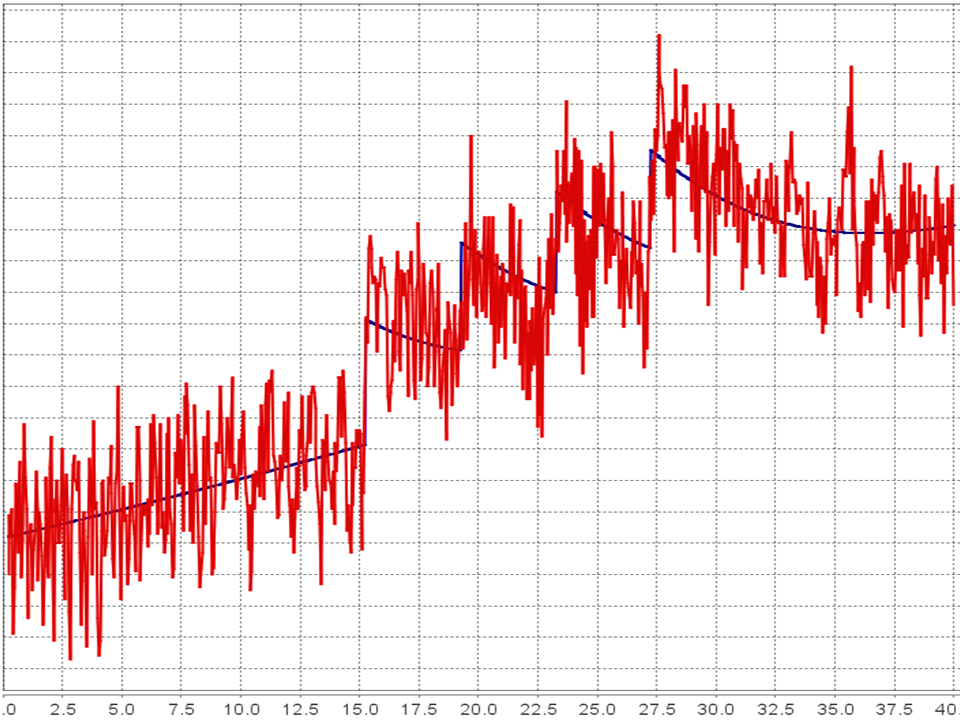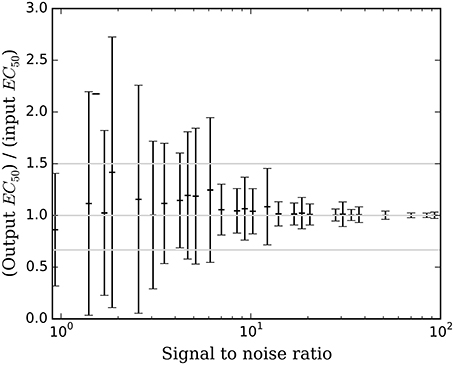
quantitative pharmacodynamics
software
system
services
info@quandyn.com

quantitative pharmacodynamics
software
system
services
info@quandyn.com

Data from a QuanDyn™ system dose-finding experiment with a dopamine D1R agonist in a live subject.
Figures are from Koller et al 2016, doi: 10.3389/fnins.2016.00144

Performance of the QuanDyn™ software on simulated data. The mean ± SD accuracy of the estimated EC50 is shown as a function of SNR. Here accuracy is defined as the output EC50 divided by the input EC50, so 1.0 = perfect accuracy.
Investigators have tried to measure chemical function in the brain by many different methods. Many have shown where in the brain a drug exerts an effect, using PET or functional MRI (dubbed phMRI for pharmacologic fMRI). This works for some questions. However, sometimes localization is not enough. For instance, you need a quantitative measurement for questions like "does this person have an abnormal brain" or "what dose of drug does this person need." Unfortunately it has been difficult to get truly quantitative chemical measurements from living brain. This goal has been thought to require two features that are difficult or impractical with many imaging methods: truly quantitative imaging measures, and repeated imaging sessions at a number of different doses.
Our new method is designed to measure quantitative drug sensitivity in a living person in a single imaging session and without radiation or arterial blood sampling. Briefly, this is how it works: By giving repeated small doses of drug several minutes apart, the timing of any brain response can be expected to depend on the sensitivity of that brain region to drug. For instance, a region with high sensitivity to drug may show a maximal response beginning with the first dose, whereas a region with lower sensitivity to drug would show a response only after repeated doses, or not at all. In other words, this method potentially converts an unknown pharmacologic parameter (EC50) to a measurable variable (time course of imaging signal), even if the imaging method itself is not quantitative.
Potential applications include:
Applications to other body organs are equally reasonable. This new method is patented.